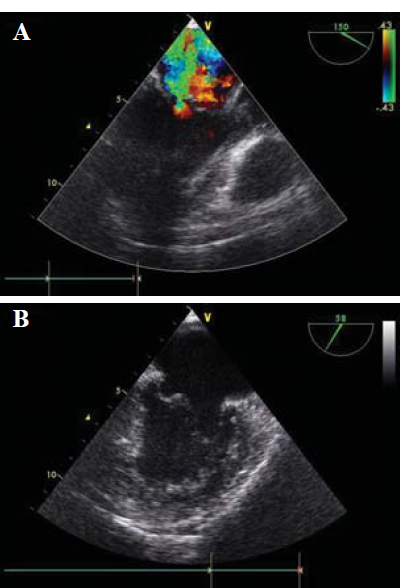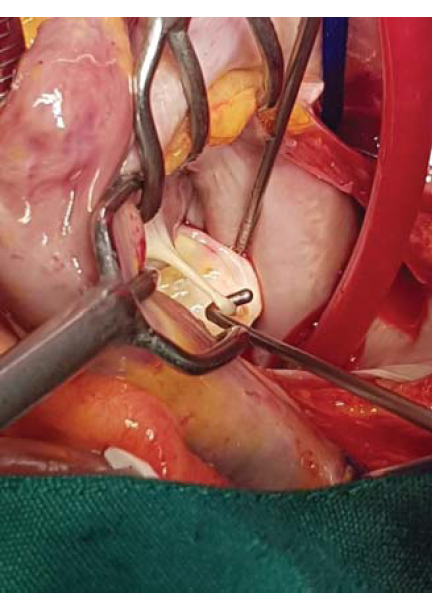Translate this page into:
Anomalous left atrial chordal attachment to the mitral valve: A very rare cause of mitral regurgitation
[To cite: Shakerian B, Mandegar MH, Estahbanaty G. Anomalous left atrial chordal attachment to the mitral valve: A very rare cause of mitral regurgitation. Natl Med J India 2024;37:293. DOI: 10.25259/NMJI_768_2023]
A 53-year-old man presented with progressive shortness of breath and exertional dyspnoea. Clinical examination revealed a pan systolic murmur of mitral regurgitation. Transthoracic echocardiography (TTE) revealed severe mitral valve regurgitation. Intraoperative transesophageal echocardiography (TEE) showed a retracted anterior mitral valve leaflet (AMVL) by a fibrous band-like structure in the left atrium, extending from the A2 segment (Fig. 1). After sternotomy, the left atrium was opened. A white, long, and slender chorda tendinea that originated from the left atrial wall and attached to the middle of the A2 portion of the AMVL was identified (Fig. 2). The aberrant chord was resected. In addition, a 30 mm annuloplasty ring (3D Memo) was inserted with interrupted sutures. TEE after operation demonstrated a fully functional mitral valve. Three-month outpatient follow-up echocardiography showed a normal mitral valve function.

- (A, B). Intraoperative transoesophageal echocardiography showing the A2 segment prolapse and severe posteriorly directed mitral valve regurgitation

- Operative view of the chorda attached to the anterior mitral valve leaflet and the left atrial wall
Accessory mitral valve chordae and in particular on the AMVL are extremely rare. Accessory left atrial chordae tendineae could be a cause of mitral regurgitation. Although the embryology of this aberration is not fully known, it is probably due to a flaw that arises when the mitral valve separates from the endocardial cushion during development of the heart. Major symptoms need surgery as it is the only effective therapy. Maintaining procedures such as catheter-based ablation or trans-catheter methods, like Mitra Clip, may be hampered by the presence of a band. Therefore, a thorough examination of the atrial cavity is required.
Conflicts of interest
None declared




